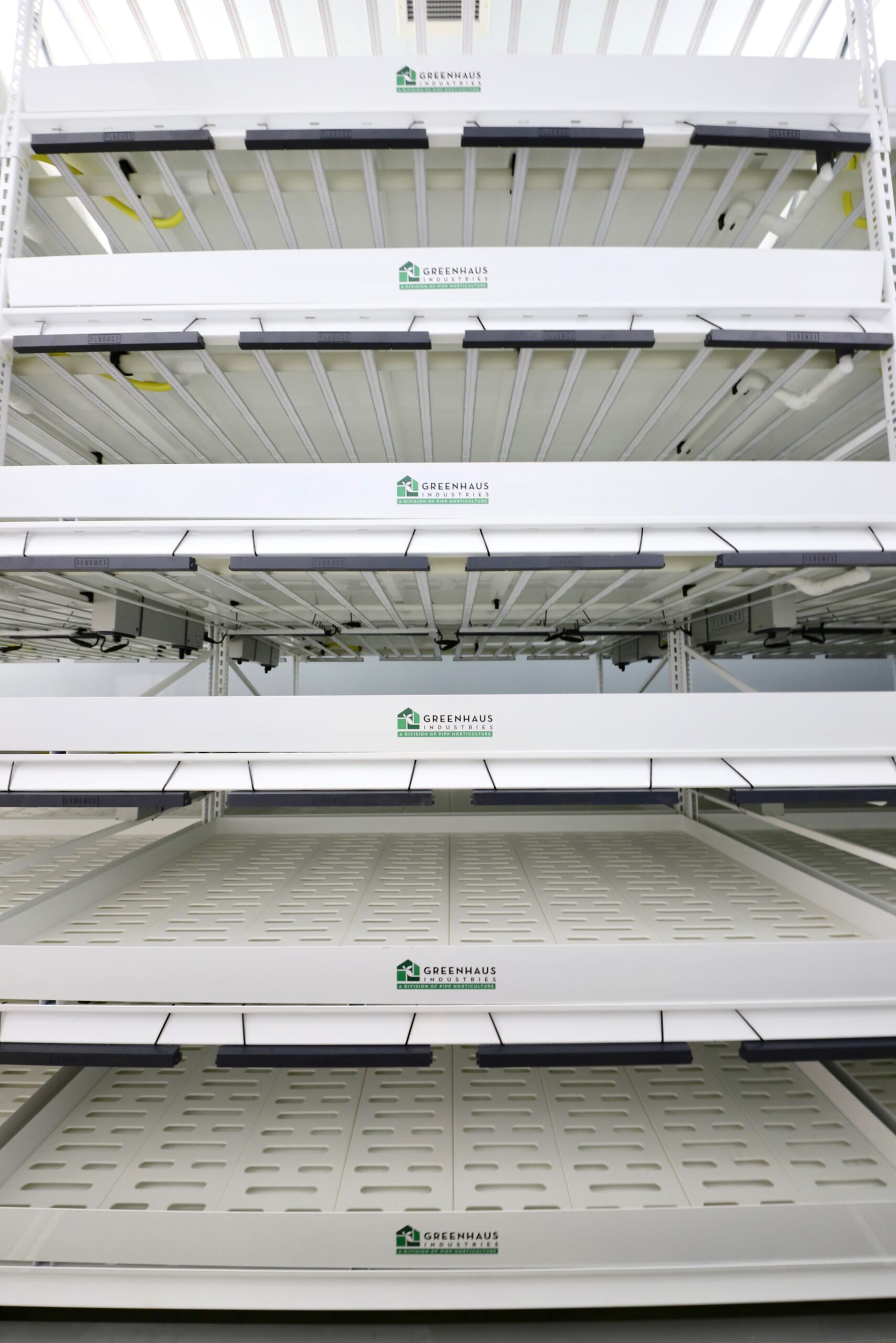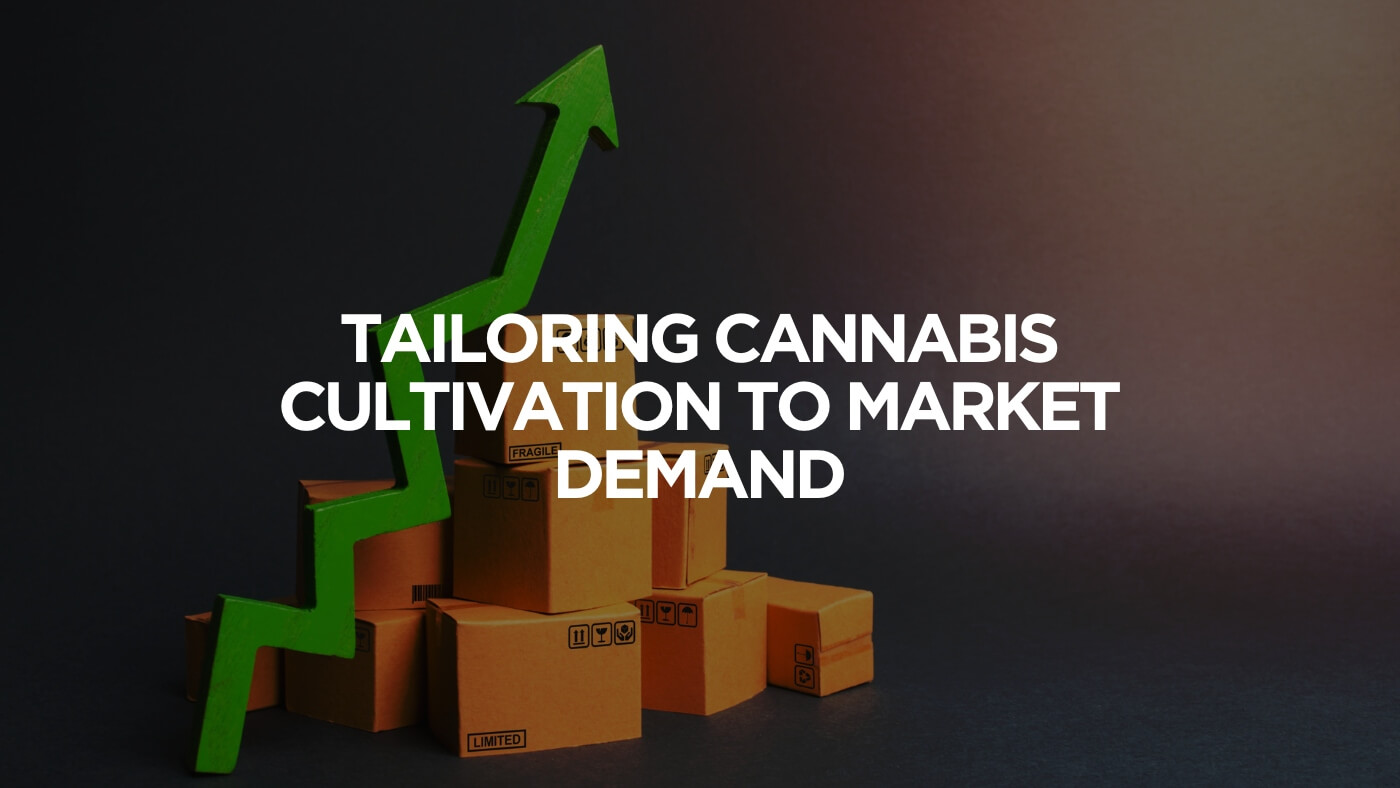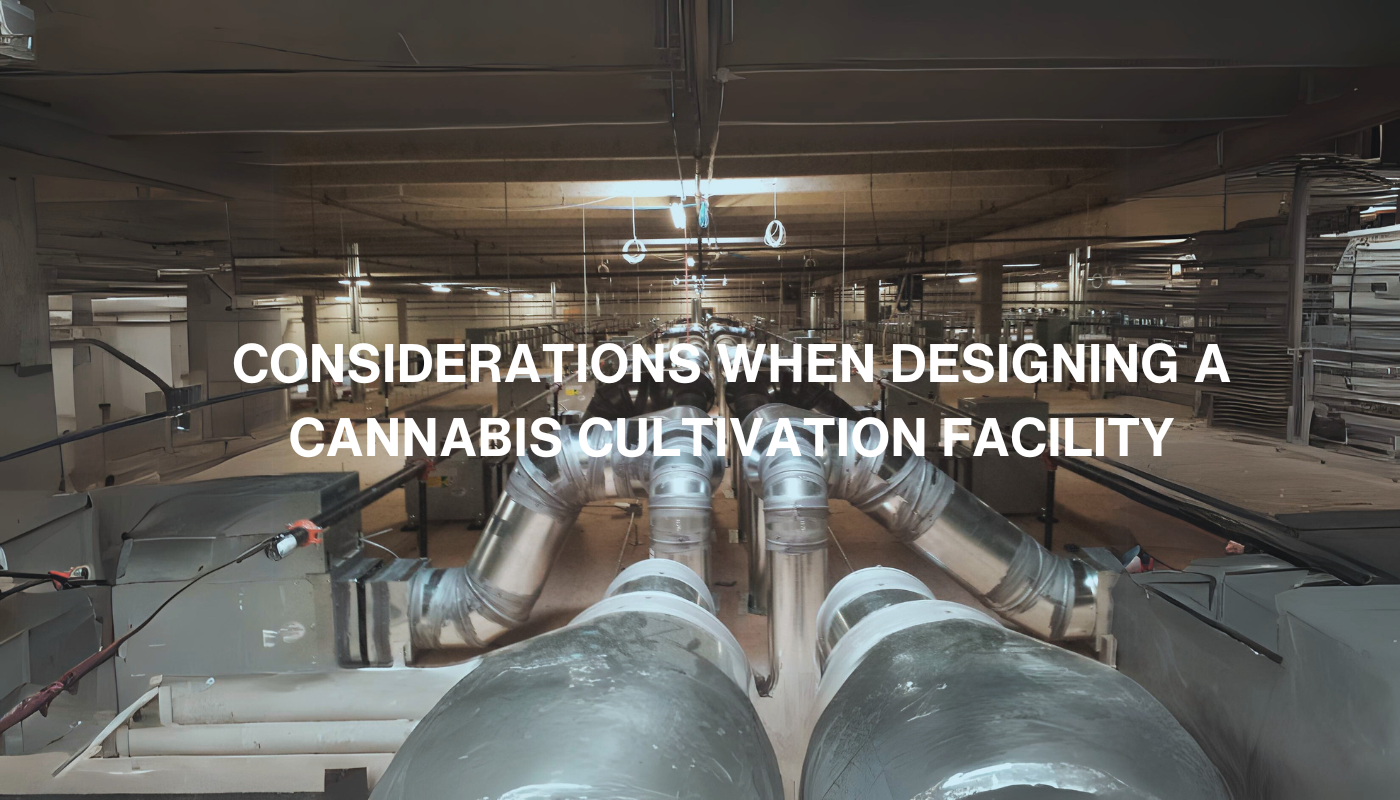
Vertical Farming An Exploration – Past, Present, and Future
Introduction
Vertical farming has come a long way from the Hanging Gardens of Babylon to ultra-modern, fully automated warehouses built today. But in recent years, one innovation has been turning the age-old concept of farming on its head—quite literally. Welcome to the world of vertical farming, the future-forward adaptation of controlled environment agriculture (CEA).
Vertical farming is an efficient, innovative, and rapidly growing methodology producing food and other crops in vertical racks and stacked structures. These systems often drastically reduce water usage and the need for herbicides and other synthetic inputs while producing yields considerably higher than traditional single-level agriculture. Vertical farming has many advantages and benefits, such as reduced space requirements, reduced per-unit fixed costs, reduced energy consumption through automation and LED lighting, improved food safety and traceability, longer shelf life, shorter harvest timeframes, and reduced labor and transport costs.
Bespoke designs and modular systems allow for flexibility regarding light sources, grow media, irrigation/fertigation, IPM, and more, providing unique opportunities to implement in various locations, from warehouses to rooftops. With its flexibility, scalability, and potential to produce consistent results all year round worldwide, vertical farming provides a viable solution for meeting the demands of our growing population while reducing waste and ensuring global access to fresh and nutritious food.
Early Vertical Farming
Vertical farming is not a new concept. It dates back thousands of years since ancient times and is integral to many cultures. Vertical farming techniques have been used for centuries to maximize land space and increase crop yields, often in challenging environments with limited resources. Farmers would sometimes stack their crops on terraces or use bamboo poles to support them in upward-growing columns.
One of the earliest examples was the Hanging Gardens of Babylon. This lush paradise was built atop terraces and layered gardens planted on sloping hillsides or stairways. In Japan, farmers used terraced rice paddies to maximize their land’s yield using a technique called “zenmai-zukuri” meaning slope cultivation. In Peru, Inca farmers created complex irrigation systems known as “Andenes,” which allowed them to cultivate crops on the sides of mountains. While these ancient vertical farming systems are different from today’s modern farming methods, they demonstrate how cleverly designed growing systems can maximize land resources and yield an abundance of crops.
Fast forward to modern times. The seeds of vertical farming were sown by an American geologist and microbiologist, Dr. Dickson Despommier, in the late 90s. Despommier saw vertical farming as a solution to the global food crisis and some of the most pressing environmental challenges we face today, including deforestation, water scarcity, and climate change. Dr. Despommier challenged conventional farming, proving that we could move beyond traditional, horizontal plots of land to the vertical landscapes of urban buildings. A simple yet revolutionary idea was taking shape: if we could farm upwards, we could free up land, conserve water, and create a sustainable agriculture system for the rapidly urbanizing world.
Antiquated Tools & Systems
The desire to move past the limitations of traditional farming, including extensive land use, climate change, fluctuating weather patterns, and the persistent issue of battling pests, pathogens, and weeds, drove vertical farming in its infancy. Most early vertical farms utilized hydroponic and aeroponic systems, offering a distinct departure from traditional soil-based cultivation. This farming system maintained an entirely controlled environment, allowing for year-round crop cultivation, thus presenting an innovative solution to conventional farming challenges.
Hydroponic systems enabled plant growth in a water-based solution rich in essential nutrients. Plants were typically supported by a soilless medium such as perlite, hydroton (LECA-light expanded clay aggregate), or rockwool. The roots were directly immersed in the nutrient-rich solution, allowing the plant to draw up nourishment as needed. This highly effective system gave plants precise nutrition and water, leading to faster growth rates than traditional soil-based farming.
Like hydroponics, aeroponics was another method employed in the early stages of vertical farming. Unlike hydroponics, aeroponics exposed roots to nutrient-rich mist. The plant roots were suspended in the air and misted as required. This technique offered the dual advantage of conserving water and providing ample oxygen to the roots, fostering healthier plants, vigorous growth, and greater yields.
The physical structure of early vertical farms was similar to shelving units, with layers of plants stacked vertically. Each level hosted crops under specialized lights. These setups allowed for the cultivation of a diverse range of crops in a single location, impervious to weather conditions. The design was a practical solution to the space limitation in urban areas and yielded the added advantage of localizing food production.
Early prototypes of vertical farming had their challenges. Both hydroponic and aeroponic systems require significant energy input to create and maintain nutrient solutions and operate lights and other mechanical equipment. Additionally, the absence of natural soil meant that the plants had less buffer and were more susceptible to irrigation/fertigation failure, pathogens, and pests that thrived in these conditions.
These early tools and systems were the stepping stones to today’s technologically advanced, efficient, and sustainable farming methods.
Initial Vertical Farm Crops
In its early years, vertical farming primarily focused on cultivating leafy greens, notably lettuce and spinach. Because leafy greens are lightweight, have short growth cycles, and require less light relative to other crops, they are ideal for stacked, controlled environments of vertical farms where optimal growth conditions can be maintained.
The quick growth cycle of leafy greens – 45 to 60 days – offered rapid turnover, allowing vertical farmers to achieve multiple harvests in a year. Additionally, relatively low light requirements made leafy greens less energy-intensive than crops requiring intense or extended periods of light exposure. This combination of factors made leafy greens the initial crop of choice in vertical farming.
It didn’t take long for innovators, ever driven by the desire to maximize the potential of their vertical farms, to begin experimenting with a wider variety of high-value crops.
Vertical Farming Today
Over the past decade, there’s been an explosive growth of vertical farming across the globe. This innovative approach to farming is reshaping the traditional agricultural landscape in response to some of the most pressing challenges facing our planet today. Broadly distributed, vertical farms are now found in bustling metropolises and rapidly urbanizing areas worldwide.
The global population is swelling at an unprecedented rate, and as urbanization accelerates, the demand for food is increasing exponentially. Traditional farms need help to keep pace with this rising demand, labor challenges, space constraints, and environmental uncertainties. Vertical farming provides a viable solution to many of these challenges. Growing crops on vertically stacked layers can produce up to 50x-100x more food per square foot than traditional farms, making it a potentially transformative solution to global food security.
Climate change adds another layer of complexity to the world’s food production problem. As extreme weather events become more common and traditional farming lands become less reliable, there’s a growing need for more resilient and adaptable farming methods. Inside the controlled environment of a vertical farm, growing conditions can be optimized year-round, immune to weather fluctuations, and free from the harmful effects of pests, reducing the need for fungicides, pesticides, and other IPM costs.
Furthermore, vertical farming’s water efficiency makes it particularly attractive in a warming world with increased water restrictions. These systems typically capture, purify, and recirculate water. Many of these systems also utilize hydroponics, aeroponics, or aquaponics, which use significantly less water than traditional farming. This is crucial as water scarcity becomes a more prominent issue with climate change.
While progress has been significant, widespread implementation has its challenges. High-interest rates, setup, and operational costs, as well as energy demands, remain significant barriers. Nevertheless, technology continues to advance, and economies of scale improve; vertical farming promises a greener, more sustainable future in food and crop production.
Current Vertical Farming Tools & Systems
In recent years, vertical farming has advanced significantly, transforming how we grow a significant amount of food. Today vertical farming uses cutting-edge technologies throughout a crop’s life cycle to increase efficiency, control the environment, and improve crop yield.
One key innovation is the implementation of advanced climate control systems. Traditional farming methods are subject to weather and seasonality, but vertical farming occurs indoors in optimal growth conditions. Farmers can create the perfect climate anytime through digitally controlled temperature, humidity, airflow, and light levels. This allows for year-round farming and makes it possible to cultivate a wider variety of crops in a single location.
Equally important is the effective management of airflow. Ensuring an even and consistent air distribution in a vertical farming setup can help prevent mold growth and other pathogens. Furthermore, it can ensure the optimal dispersal of carbon dioxide for photosynthesis. Advanced fan and ventilation systems, often incorporated into the overall climate control system, can provide a high degree of control over these variables. Another advanced technology in today’s vertical farming is irrigation and fertigation systems. Unlike traditional farming, where water and nutrients are wasted, well-developed systems transport water and nutrients directly to the plant’s roots in the exact amounts needed. This results in significantly reduced waste and improved crop yield. Additionally, some systems incorporate recirculation technology to save water and nutrients further.
Internet of Things (IoT)-connected sensors are another significant technology leveraged in modern vertical farming. These devices can monitor a wide array of factors, including soil moisture levels, nutrient concentration, pH levels, and even plant growth rates providing real-time data to farmers, allowing them to make immediate adjustments to the farming conditions. This data-driven approach to farming makes it more efficient and reduces the risk of crop failure.
Finally, vertical racking systems have evolved significantly in recent years. These systems allow for the stacking of crops to maximize the use of space, making vertical farming ideal for urban areas where space is at a premium. Modern vertical racking systems are far more than just shelves for plants; they are integrated systems that can include built-in lighting, irrigation, catwalks, and even automated harvesting technology. Vertical racking systems have evolved into smart farms, which can monitor and control every aspect of the growing process, from sowing seeds to harvesting crops.
All these advancements have transformed vertical farming into a highly efficient, sustainable, and scalable method of food production. These technologies allow farmers to maximize their yield, minimize waste, and grow healthier, more nutritious crops, thus revolutionizing the future of agriculture.
Today’s Vertical Farm Crops
Present-day vertical farms grow an impressive array of crops. Beyond the traditional leafy greens, these farms now cultivate tomatoes, peppers, strawberries, culinary herbs, various types of mushrooms, and even exotic fruits. These fruiting plants require more care and have more complex growth requirements. Nonetheless, the advanced control systems of vertical farms were up to the challenge.
Hemp and cannabis are also cultivated in vertical farms. In addition to providing a controlled, secure environment, vertical farming ensured these crops could be grown year-round, irrespective of outdoor weather conditions. Even grain crops, traditionally grown in large, open fields, were introduced into vertical farms.
While vertical farming may have started focusing on leafy greens, its trajectory has expanded into an impressive array of crops. This diversity of crops has not only broadened the potential applications of vertical farming but also demonstrated its flexibility and adaptability.
The Future of Vertical Farming
As we imagine the urban landscapes of the not-so-distant future, it’s becoming increasingly clear that vertical farming will become an integral part of the picture. This is an era where urban spaces are expanding, but arable land is limited. The continued rise in controlled indoor agriculture startups demonstrates the burgeoning interest in this field. Entrepreneurs and innovators are recognizing the tremendous potential of vertical farming and are seeking to capitalize on its benefits.
Research institutions are pivotal in developing and advancing vertical farming techniques. Institutions are pioneering new growing methods, enhancing vertical farming systems, and studying the impacts of different lighting and temperature conditions on plant growth.
Vertical farming is not just an option anymore; it’s quickly becoming a necessity for sustainable urban living. With urbanization on the rise, food security is an increasing concern. Vertical farming provides a potential solution to this problem, allowing cities to become more self-sufficient regarding food production. As we look to the future, it’s clear that vertical farming has a significant role in our lives. It promises to revolutionize how we grow and consume food, making our cities greener and more sustainable and contributing significantly to global food security.
The increasing momentum around vertical farming startups and research, coupled with rising demand for locally sourced and sustainable food, suggests that vertical farming is set to become an intrinsic part of our urban landscapes.
Future Vertical Farming Tools & Systems
As technology evolves, so do the tools and systems that support vertical farming. As we gaze into the future, we envisage vertical farms becoming even more intelligent, highly automated, and efficiently self-regulating, poised to revolutionize the agricultural landscape.
Integrating advanced Artificial Intelligence (AI) systems is crucial to this future. AI can significantly enhance vertical farms’ efficiency and yields. Smart algorithms can monitor and learn from data points, ranging from temperature, humidity, and light levels to the health and growth rates of the crops. Leveraging AI, these systems can make real-time decisions and adjustments to optimize these parameters, ensuring the highest yields and best quality products. Additionally, machine learning, a subset of AI, could predict and help manage potential challenges, such as disease outbreaks, before they significantly impact the crops.
Automation is another cornerstone in the future of vertical farming. As farms grow in size and complexity, automation will become increasingly necessary to ensure efficiency and scalability.
Control systems, too, are poised to become more sophisticated. These systems will manage everything from light to nutrients with pinpoint accuracy, thus maximizing output while minimizing input.
The future vertical racking systems will employ these technologies to become self-regulating, ultra-efficient agricultural hubs. Imagine a closed-loop system where sensors continuously monitor plant health and growth, and AI algorithms adjust environmental parameters accordingly. Any waste produced would be recycled within the system, and renewable energy sources could power the entire operation.
Future Vertical Farm Crops
Vertical farming will inevitably transform dramatically in the future, expanding to include crops previously deemed unfeasible for such methods.
Mushrooms, for instance, could become a common sight in vertical farms of the future. While these fungi typically thrive in dark, humid environments. With their myriad health benefits and versatile culinary uses, the large-scale, year-round production of various mushroom species could be within our reach.
Similarly, algae—a cornerstone of the burgeoning field of biotechnology and a potent renewable energy source—might find a home in vertical farming systems. The controlled environments of vertical farms could provide optimal conditions for growing algae at scale, thus opening the door to the industrial production of biofuels, bioplastics, and even superfoods, like spirulina and chlorella.
In the not-so-distant future, vertical farms could also nurture protein-rich legumes, an essential food group that is key to addressing global nutritional deficiencies. With tailored growth conditions and LED light spectrums to stimulate growth, legume varieties like peas, lentils, and chickpeas could see exponential yield increases, bolstering our protein supply.
It’s an exciting time for vertical farming; the seeds we plant today could yield a bounty of innovation and opportunities for tomorrow’s farmers.
Conclusion
In our journey through the past, present, and future of vertical farming, we’ve traced its roots from being a mere concept to an exciting and growing reality. Today, vertical farming stands at the intersection of technology and agriculture, marrying the two in a union that promises to transform how we produce and consume food. Looking forward, the potential of vertical farming is vast. As we refine the technology and gather more knowledge on optimizing crop growth in controlled environments, we can expect to see even greater yields, more variety in crop types, and a further reduction in the environmental impact. Future developments may also bring down the initial costs, making this farming method more accessible to communities around the globe.



